Best acoustic guitars under $1,000 2025: expert picks for great tone on a budget
Enjoy superb playability and sound with our guide to the top mid-priced acoustics
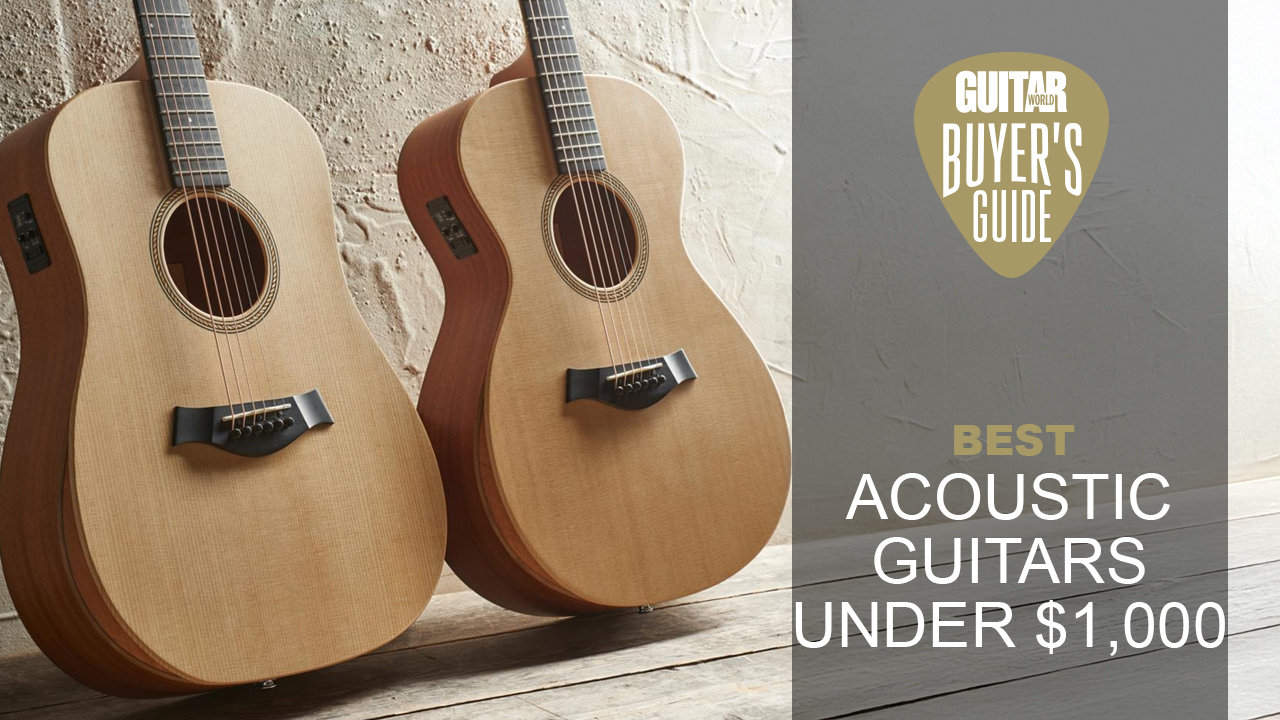
With $1,000 to spend on a new acoustic guitar, you can get a lot for your money. Moving firmly past the beginner instrument level, you're well into the zone of solid tops, better bracing, and nicer tonewoods. The best acoustic guitars under $1,000 will deliver sumptuous sounds and offer the perfect stepping stone for the next part of your guitar-playing journey.
I've tested a boatload of acoustic guitars over the years, and this real-world experience has formed my selection here. I've listed the guitars by use case, so whether you need a big-body dreadnought with a loud voice, or an excellent acoustic-electric for gigging. I or our wider team has personally tested all of the guitars here, so you can rely on getting an unbiased recommendation backed by decades of playing experience.
If you're still unsure about anything, have a look at our FAQ section, which features loads of common questions answered by our expert team of guitar gurus.
On the hunt for guitar gear savings this Black Friday? Shop our handpicked selection of the best Black Friday guitar deals.
Our top picks
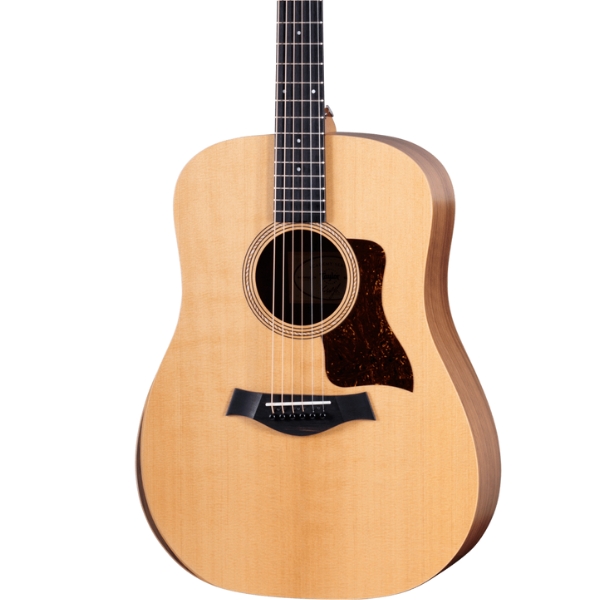
Our top pick when it comes to acoustic under $1,000, the Taylor Academy Series 10E delivers across the board when it comes to sound, style, and playability. A good all-rounder for fingerstyle and hard strumming, the low action and response make it a brilliant value-for-money acoustic guitar.
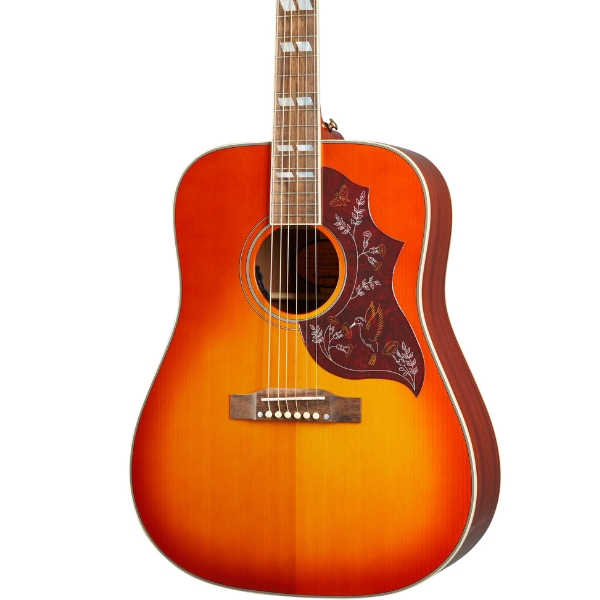
The Epiphone Hummingbird is a lightweight version of one acoustic guitar's most storied instruments, but don't let the low price point fool you, this is a properly good acoustic. The looks are just right, and we love its larger-than-life voice and super playable neck.
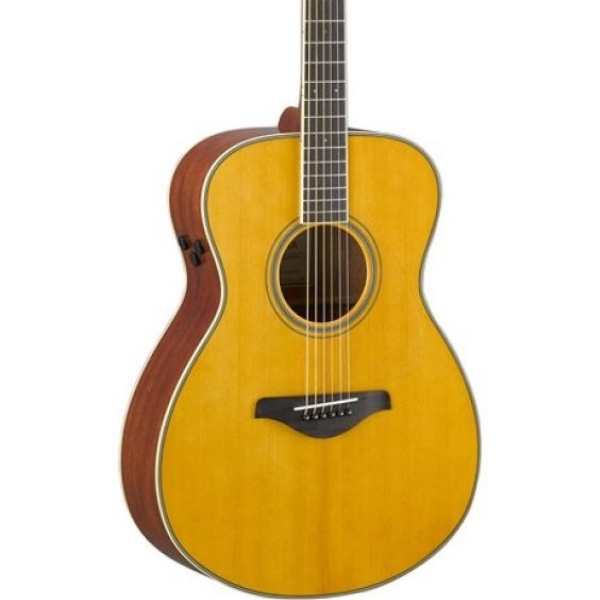
With its smaller body size and built-in effects, the Yamaha FS-TA TransAcoustic is our pick if you're looking for a smaller-sized acoustic guitar. As with all Yamaha acoustics, the build quality is sensational, and having effects come out of the soundhole with the guitar unplugged is something you need to experience.
Best overall
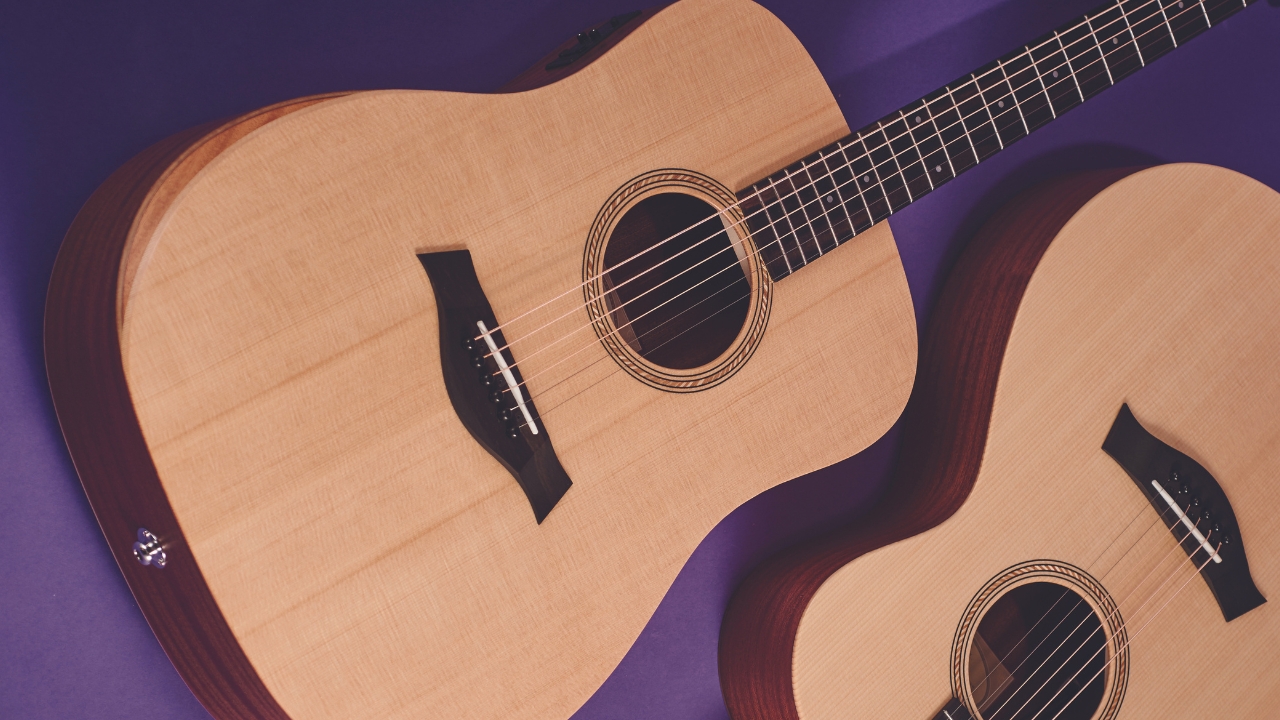
1. Taylor Academy Series 10E
Our expert review:
Specifications
Reasons to buy
Reasons to avoid
The Academy aesthetic is simple. The notably light hue of the solid Sitka spruce here won’t be to some traditionalist tastes, but it gives the guitars a clean, defined look that, as we’ll find out, is reflective of performance. Nevertheless, despite the simple acrylic dot fret markers, it’s not completely utilitarian; the laminated birch and fiber rope braid design rosette is understated but stylish.
This guitar isn’t lacking Taylor’s spruce top hallmarks - bright and resonant trebles with assured projection. The low action is extremely welcoming across the ebony ’board, too, and will help break boundaries for aspiring players. Combined with the response of this instrument, it creates an immediately enjoyable playing experience.
The 10e offers lower mid presence alongside the deeper bass response in comparison to its smaller-bodied sibling, the 12e’s, higher range energy. It will come down to personal preference for players between those two models, with shape and tonal balance, but both guitars fare very well as all-rounders at either end of the spectrum for delicate picking, and their projection doesn’t lose its clear definition under heavy strummed playing, either.
Plugged in, the ES-B represents the qualities of this guitar well. Indeed this model it sounds and feels superior acoustically and plugged in than most models we’ve played in its class. The Academy Series represents a very clear vision, and in many ways, a dream beginner guitar, as well as a potential trade-up for some existing players – one that can inspire and go the distance with a guitarist from bedroom to stage.

"The Taylor Academy Series guitars may have “plain Jane” appearance, but guitarists of all levels of experience will find it hard not to fall in love with their sexy sound quality, comfortable playability, and impressive electronics."
Read our full Taylor Academy Series 10E review
Best big body
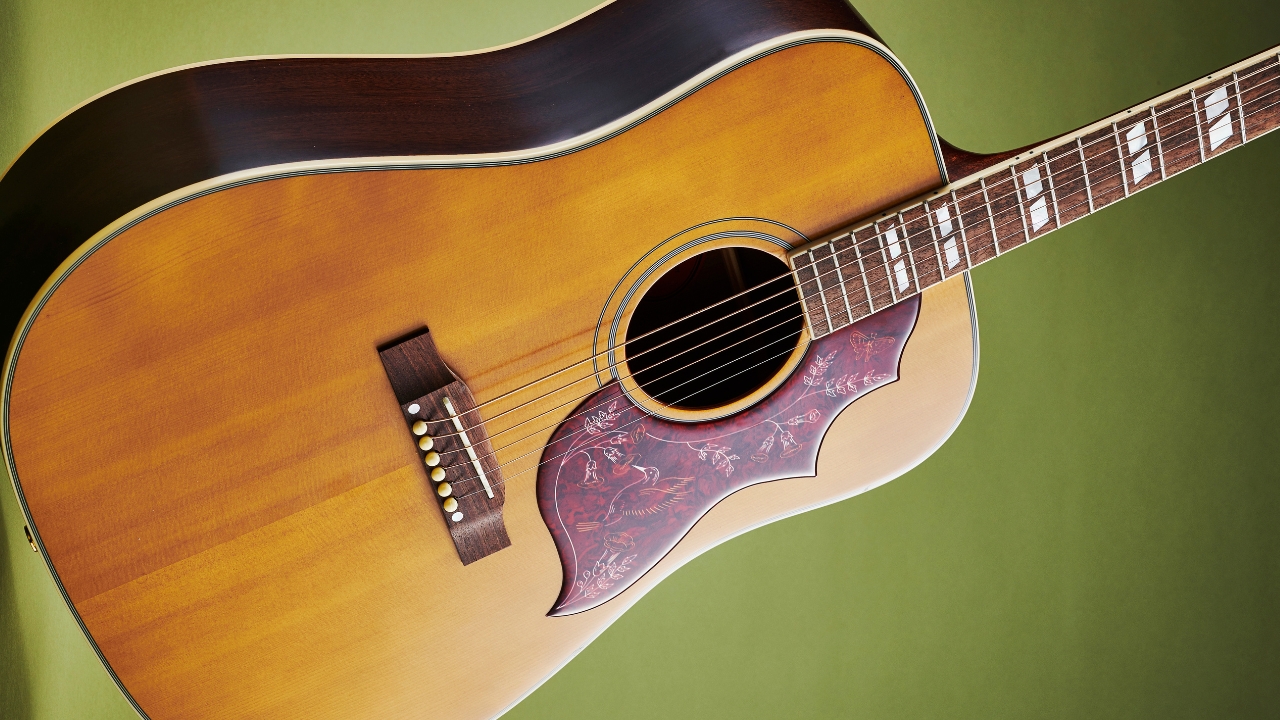
Specifications
Reasons to buy
Reasons to avoid
The Hummingbird doesn’t need much of an introduction. It has been a firm favorite of the biggest rock stars of all time, from Tom Petty to Bob Dylan, Keith Richards to Chris Cornell. It’s fair to say that the Hummingbird has left a lasting mark on the world of music.
Unfortunately, we don’t all have the money to drop on the Gibson version, so the next best thing has to be the Epiphone Inspired By Gibson Hummingbird - and we must say this is a fantastic option for a guitar player of any ability. It's a large body, so probably not best for younger or smaller players, but if you're a fan of volume then this guitar will deliver.
It's got a beefy voice when played with no hint of any boxyness in the sound. Chords resonate beautifully and everything is underpinned by a lovely low end that gives it a fantastic backbone. From its all-solid construction, incredibly comfortable neck, and drop-dead gorgeous looks, this guitar is easily one of the best acoustic guitars under $1000.

"A beautiful square-shouldered acoustic that'll only improve as the years go by, there's a lot to like about Epiphone's high-end take on the Hummingbird. It's playable, looks the part and sounds it too."
Read our full Epiphone Hummingbird review
Best concert
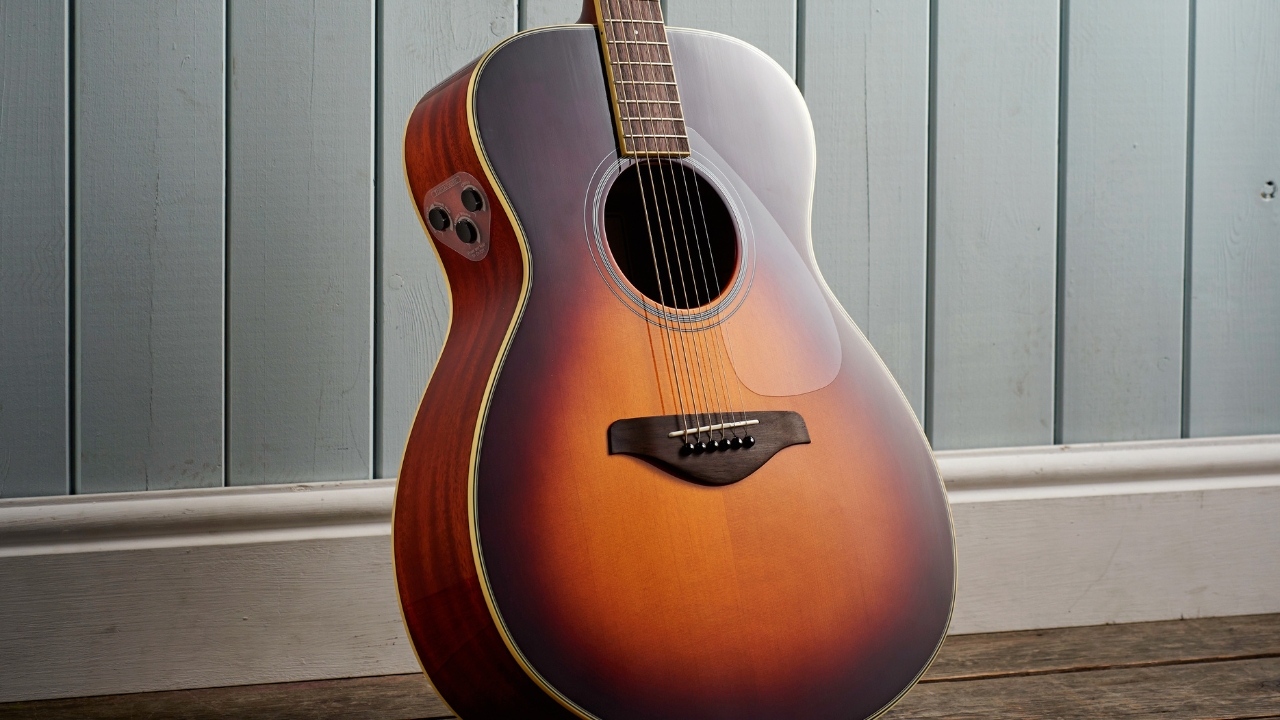
3. Yamaha FS-TA TransAcoustic
Our expert review:
Specifications
Reasons to buy
Reasons to avoid
Every now and then, an instrument comes along that turns the entire guitar industry on its head. That guitar was the Yamaha TransAcoustic. Not only is this a beautiful guitar to look at and to play, but it has a rather clever surprise under the hood - the ability to generate its own reverb and chorus, with no need for an amp, no seriously, no need for an amplifier!
Even without the cool effects engaged, the FS-TA is still a brilliant acoustic in its own right. Scalloped bracing delivers plenty of volume for its smaller size, and gives it control in the low end. Yamaha's excellent build quality is present all across the construction too, with everything neatly put together in a way that reassures you it will stand the test of time.
You would be forgiven for thinking that this concept is just a gimmick, but we can assure you from trying it ourselves that Yamaha has delivered a genuinely inspiring guitar that, quite frankly, is a joy to play. It is genuinely perplexing how Yamaha can produce a guitar of this quality at such a low price.

"Without the TA powered up, the guitar sounds like a great acoustic that punches above its weight. But turn that TA sucker on, and… well, the guitar becomes something else."
Read our full Yamaha FS-TA TransAcoustic review
Best for gigging
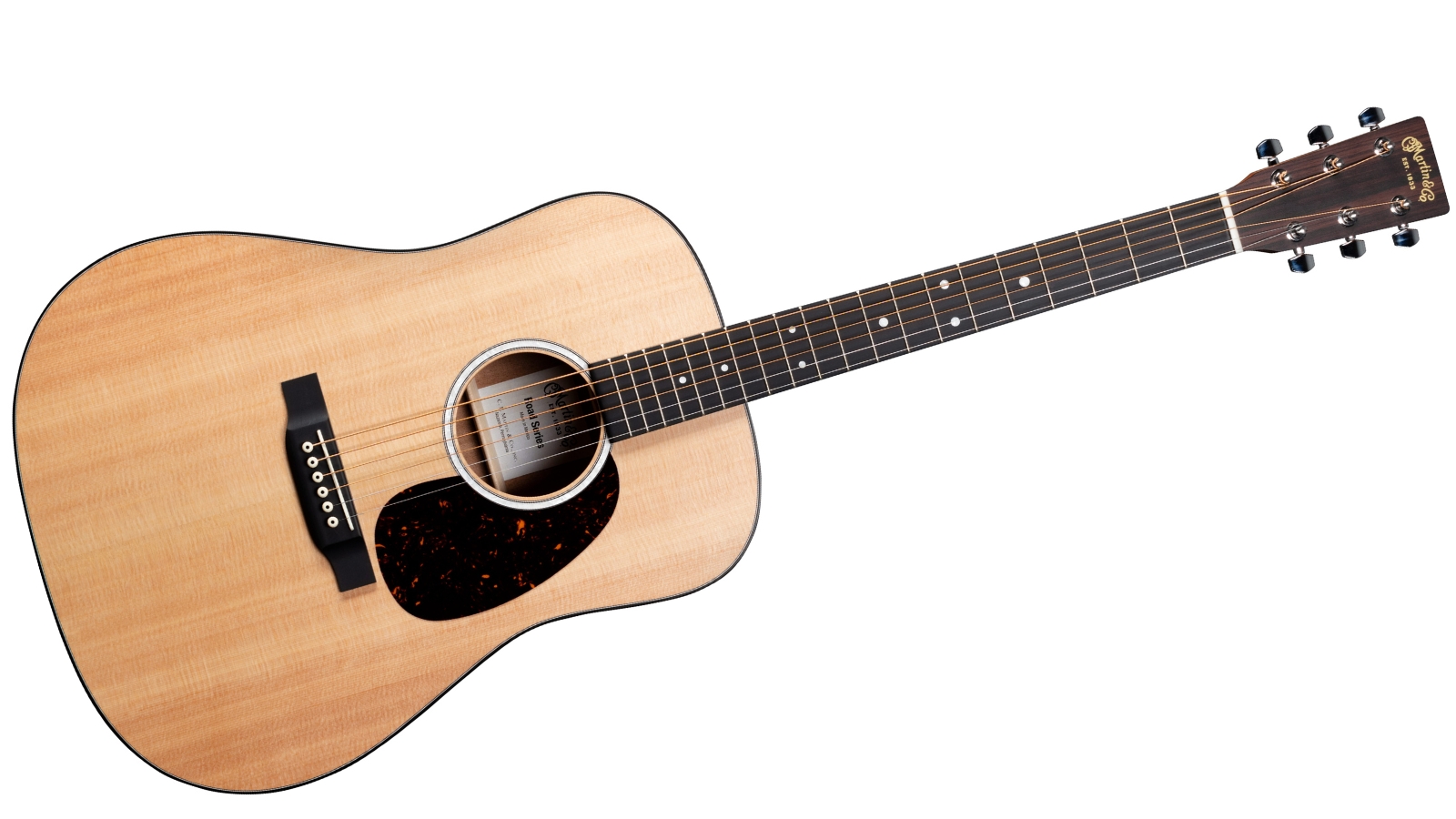
4. Martin Road Series D-10E
Our expert review:
Specifications
Reasons to buy
Reasons to avoid
The Mexican-made Martin Road Series D-10E is an amazing mid-priced acoustic guitar. Featuring all the excellent playability and build quality of Martin’s more expensive offerings, this stripped-back gigging machine is all acoustic and no frills.
It’s got an unplugged tone that’s warm and full of character, the signature of any Martin dreadnought guitar. It lives to be played hard, and strummed chords project incredibly well without ever sounding muddy. The balance of tone on offer here really is quite lovely.
The high-performance taper neck will have you coming back again and again, it’s a phenomenally well-playing instrument. Onboard Fishman MX-T electronics translate the unplugged tone really well, it has none of that plasticky sound you sometimes get with cheaper electronics.
Best parlor
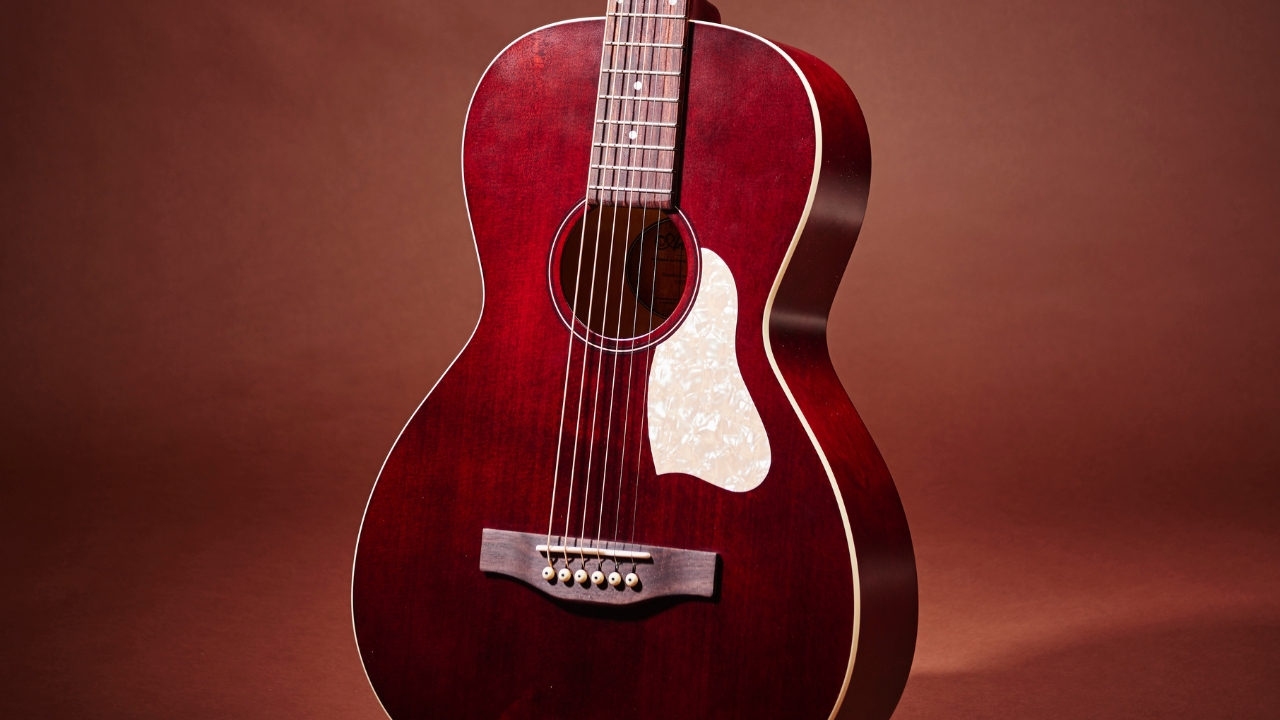
5. Art & Lutherie Roadhouse Tennessee Red
Our expert review:
Specifications
Reasons to buy
Reasons to avoid
Art & Lutherie may not be a brand that is on everyone’s radar, but for familiarity’s sake, the company is a division of the more well-known Godin Guitars. That doesn’t change the fact that, with the Roadhouse, you get what appears to be a boutique instrument at a budget price.
For starters, there’s a solid spruce top and rich, crimson laminated wild cherry back and sides, covered with a pearloid pickguard, off-white binding and a semi-gloss finish that allows a bit of grain to show through – a nice touch. Coupled with the parlor-size body, the Roadhouse exudes a classic old-timey feel right out of the box.
And it plays and sounds great to boot. The middle and upper ranges of the guitar are very strong, with plenty of clarity, definition and warmth. What’s more, the instrument rings out in a way that belies its small size, making it perfect to cut through the mix in an ensemble setup. The fretboard is clean and the strings are nicely spaced, making the Roadhouse a pleasure to pick. A perfect companion to playing some country, blues, or – why not? – some country blues.
Best jumbo
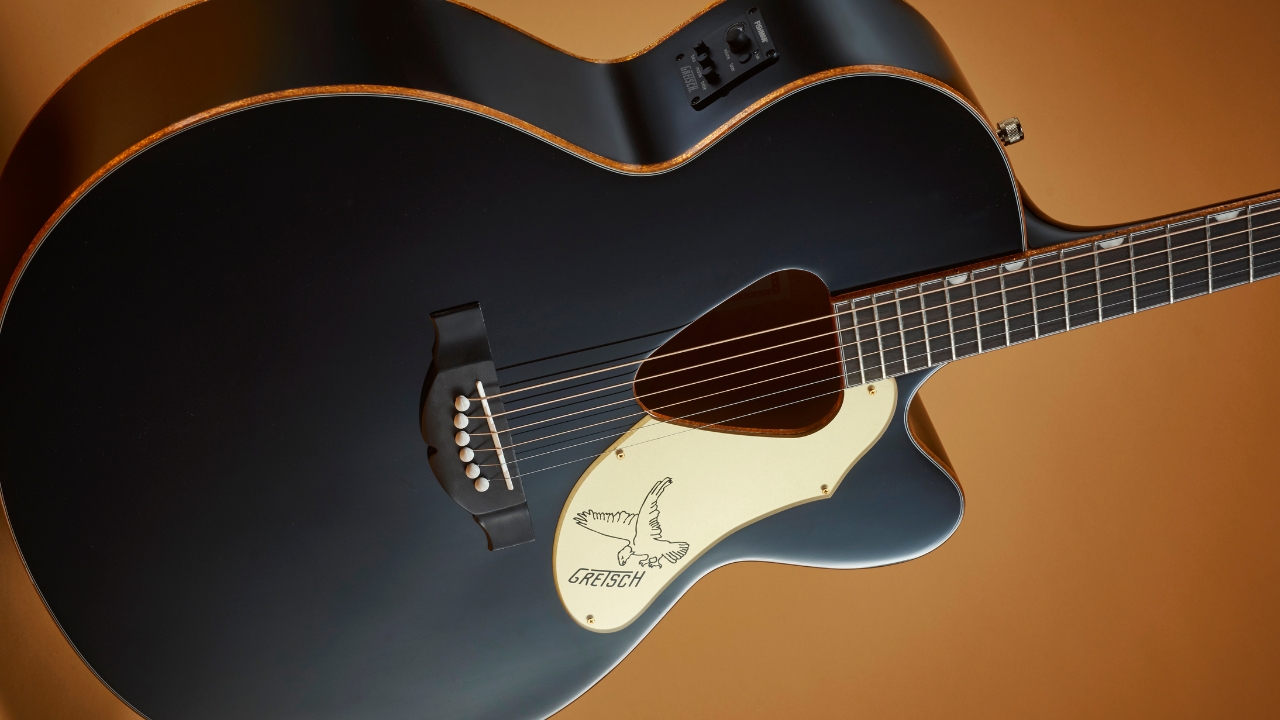
6. Gretsch G5022CWFE Rancher Falcon Jumbo
Our expert review:
Specifications
Reasons to buy
Reasons to avoid
Gretsch is best known for its truly iconic drums and snazzy electric guitars, but it also makes a fine line of acoustics, most of which are remarkably inexpensive. The snappily named G5022CWFE Rancher Falcon Jumbo is obviously from the more-is-more school of aesthetics, an appearance that clearly owes a lot to Gretsch’s electric Falcon range.
It’s available in brightest white or darkest black, colors that pop against the dazzling gold-sparkle bindings on the top, back, sound hole, fingerboard and headstock. Not enough bling? Well, just to liven things up a little more, Gretsch has slapped a huge gold-sparkle winged logo on the headstock and bolted on some gold-plated tuners. It’s all jolly good fun, but possibly not for players lacking a sense of humor.
However, it's not all show and no go. Like all good jumbos it’s built with a solid spruce top and maple sides, which provide that characteristically forthright yet balanced tone, with clarity aplenty in the well-tamed low end. It’s also stage ready, with a Fishman Presys III Pickup System with preamp and tuner already built in.
There’s an awful lot on offer here for the money.
Best cutaway
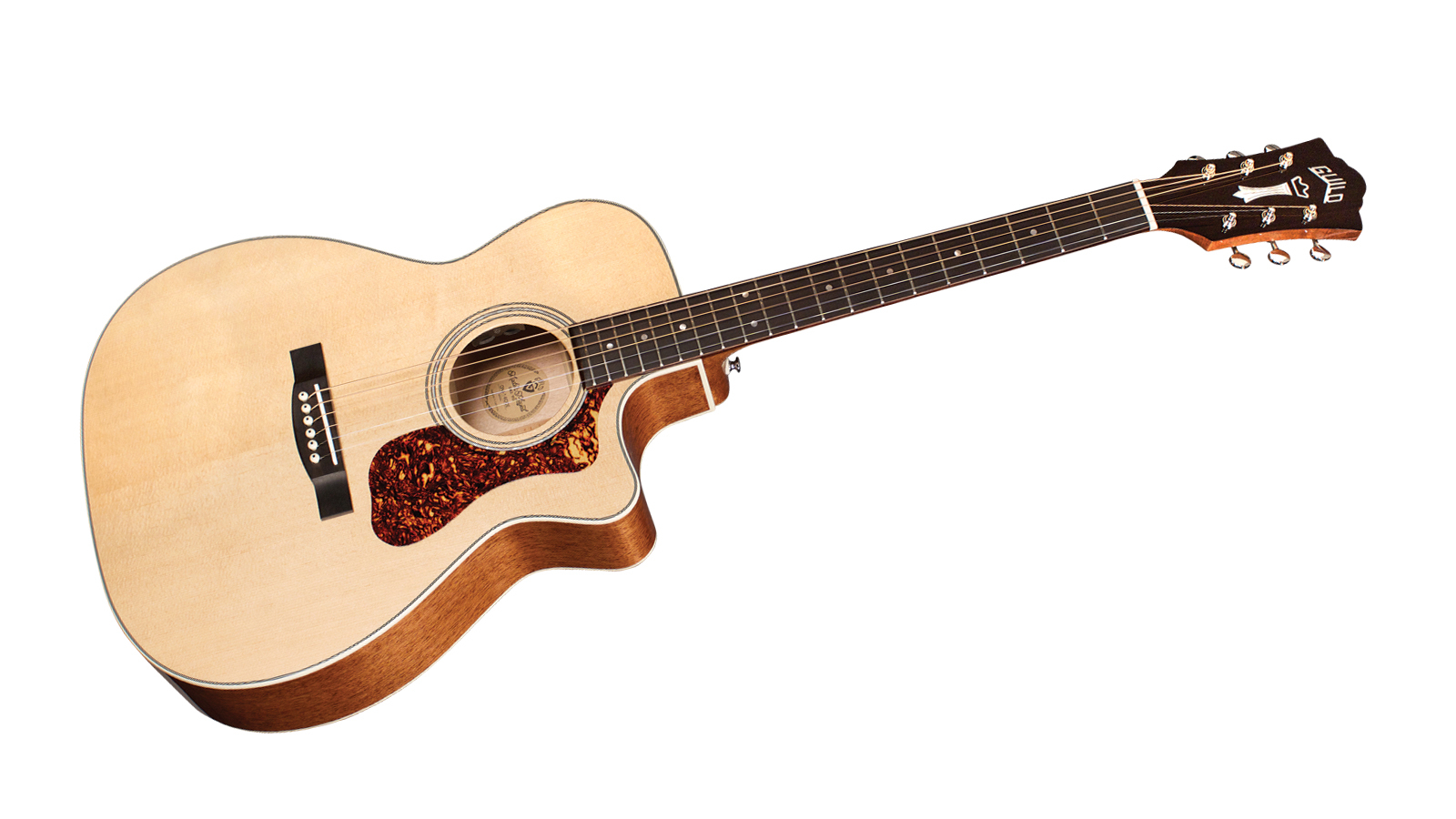
7. Guild OM-140CE
Our expert review:
Specifications
Reasons to buy
Reasons to avoid
The OM-140CE is a model that sits within Guild’s Westerly Collection, a heritage-inspired line that pays homage to the factory occupied by the brand in Westerly, Rhode Island, during the mid-‘60s. These days, Guild’s top-end production is centered on California, with the rest of its range built in the Far East, yet the OM-140CE makes a decent stab at evoking the spirit of the brand’s halcyon days.
It’s a mid-sized acoustic that features solid wood throughout. Sitka spruce for the top, and African mahogany for the back and sides. As such, it has a beautifully balanced voice that’s equally suitable for energetic strumming as it is delicate fingerstyle.
Scalloped X-bracing, a rosewood bridge, and a real bone nut and saddle are appealing premium features to have, as is the fine mother-of-pearl rosette. Neatly concealed within the cutaway body is a Fishman Sonitone preamp and piezo pup system for solid amplified tone.
Period-correct features include the Chesterfield headstock emblem, vintage open gear tuners, and a tortoiseshell pickguard, plus there’s a comfortable C-shape vintage-style neck to wrap your fingers around.
How to choose
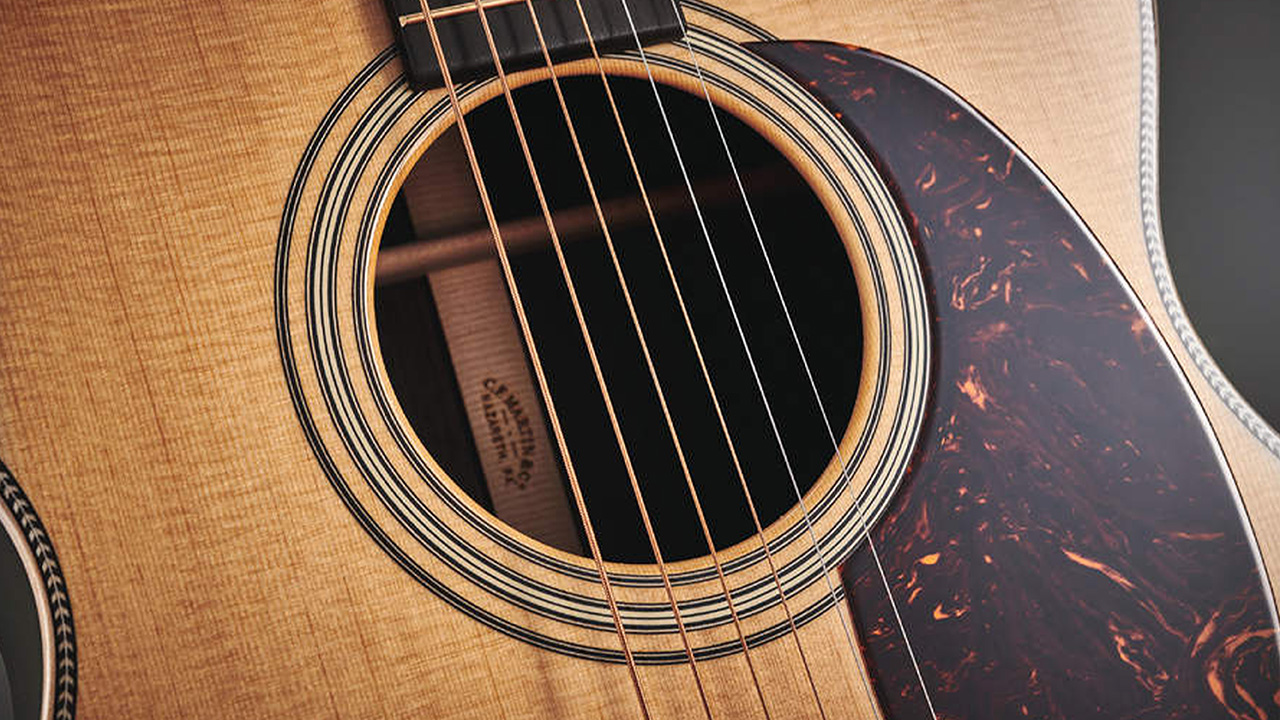
When choosing the best acoustic guitar under $1,000, there are several key factors to consider to ensure you find an instrument that suits your playing style and preferences.
First, pay attention to the type of wood used in the guitar's construction. Solid wood tops, such as spruce or cedar, generally produce better sound quality compared to laminated wood. This is crucial for resonance and tonal depth. The back and sides also play a significant role in sound projection, with mahogany and rosewood being popular choices for their rich tones.
Next, consider the body style of the guitar. Different shapes, like dreadnought, concert, or parlor, offer varying sound qualities and comfort levels. Dreadnoughts are great for strumming and have a full sound, while concerts and smaller bodies might appeal to fingerstyle players for their clarity and ease of playability.
When evaluating playability, check the action, which refers to the height of the strings from the fretboard. A comfortable action allows for easier playing, especially during long sessions. Additionally, inspect the neck width and profile to ensure it feels right in your hands.
Avoid guitars with poor craftsmanship. Look for consistent finishes, well-aligned frets and no visible defects. A poorly made guitar can lead to playability issues down the line.
As for brands to consider, some reputable names in the under-$1,000 range include Yamaha, Taylor, Epiphone, Gretsch, Guild and Martin. These brands are well-regarded for their quality and sound.
Ultimately, the best guitar is the one that feels good to play and sounds right to your ears, so take your time to try out different models in person if possible.
Glossary of terms
I know that the terms used when talking about the acoustic guitars in this guide can be confusing. So, before we dive into the advice, here are the meanings behind common terminology you'll see in this guide and beyond.
Body style: Acoustic guitars come in various shapes and sizes, from parlor and grand auditorium to dreadnought and jumbo. Typically, which is right for you at this stage in your playing career comes down to size. We go into more detail about the sizes below.
Top: The top of the guitar refers to the wood on the face of the instrument. This can be solid wood or a combination of woods, which we call a laminate top. The type of wood used for the top significantly impacts the tone of the guitar.
Back & sides: Again, like the top, the back and sides of an acoustic guitar can be made from a variety of different woods. At this price point, you’ll mostly see laminate construction, as all solid guitars are generally a lot more expensive.
Fingerboard: The fingerboard is the playing surface of the neck of the guitar. This can be made from everything from rosewood to walnut, Richlite and pau ferro. Each brings their own characteristics to the table, and which you like mostly comes down to personal preference.
Scale length: Simply put, the scale length refers to the distance between the top nut and the saddle on the bridge – and is used to measure the total playable length of the instrument.
Electronics: When we talk about electronics in the context of acoustic guitars, we refer to the pickup system, preamp, or even an onboard tuner. Of course, at this early stage of your playing, you don’t necessarily need a pickup, but if you have aspirations of playing live, you’ll want to consider a model with electronics.
FAQs
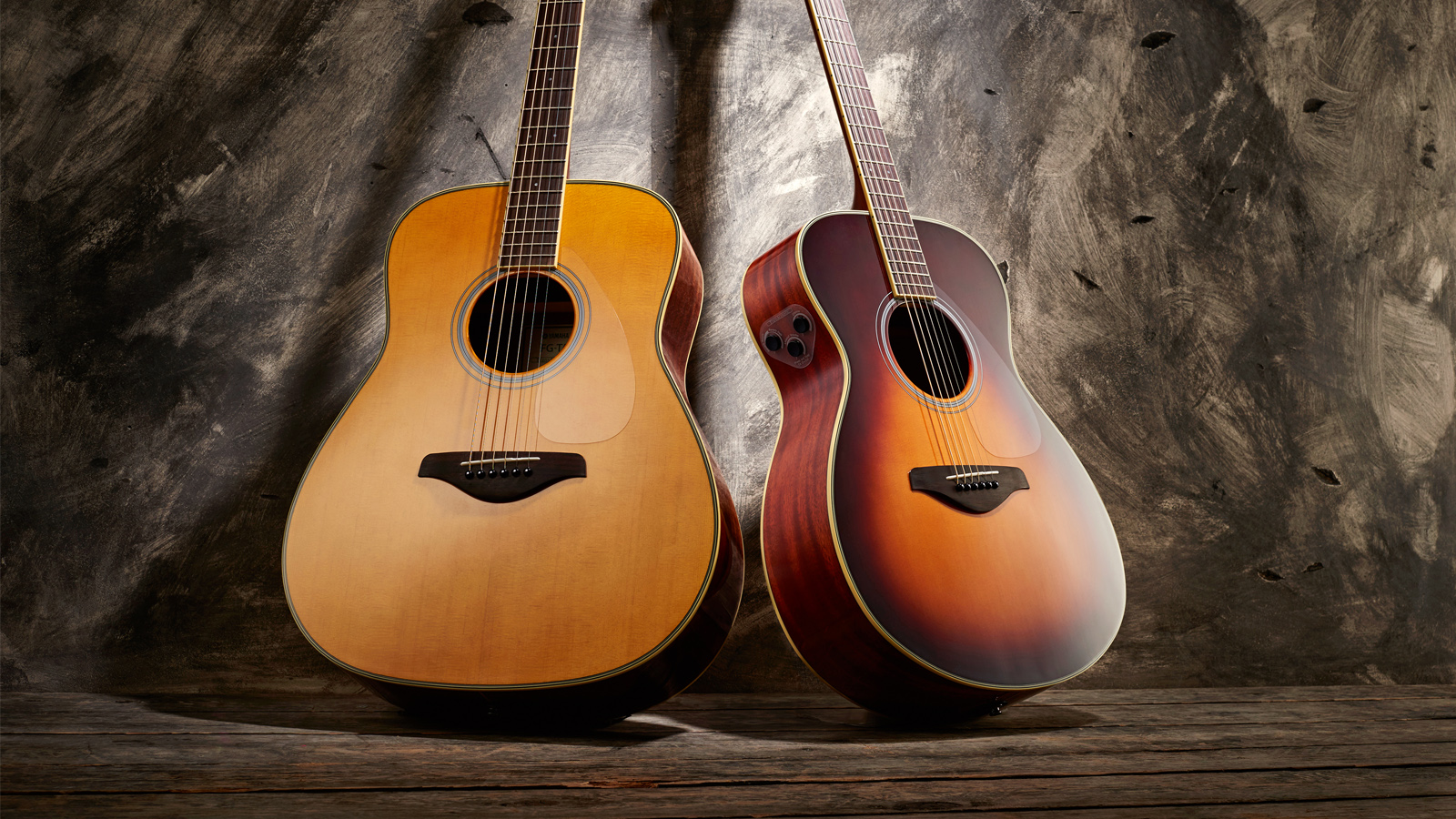
What is a good acoustic guitar for the price?
For most of us, $1,000 is a real roll of dough and then some, so you’ll want to spend your money wisely. However, to benefit from the best value possible, we recommend avoiding the very bottom end of the market. That’s because good guitars are precision instruments that need to be crafted from quality materials, something that can’t be achieved on an unrealistic budget. Not only will a poorly made guitar sound awful, but it’ll also likely be very difficult – painful even – to play.
If you can afford it, consider $350 as the low-tide mark, but invest more if possible because guitars at the mid-to upper-end of our self-imposed budget will be very good indeed. They may not be hand built in small numbers from exotic materials, but they’ll still sound fantastic and prove a joy to play.
What size acoustic guitar should I get?
There’s a popular misconception among novices that small guitars are for smaller people and large guitars are reserved for the big guys. While it’s true that some people of more modest stature may struggle to get comfortable with a large dreadnought, the fact is that guitars are actually built in different sizes for tonal variation and volume.
More confusingly, there’s a plethora of guitar sizes out there, with no standards or agreed naming conventions. That said, many can be bunched together in loose groups, so let’s run through four of the most common, from small to large.
Parlor guitars are small, lightweight, and tend to have a bright top end with prominent mids, which makes them a favorite for blues and slide styles. Their low volume and diminutive size make them a great choice for playing at home, hence the name. They typically have a lower bout width of about 13” and a depth of 4.25”.
Move up a step to the mid-size and you’ll find a wide variety of names bandied about including 000, OM, and Grand Auditorium. Known for their exquisite, balanced tone, these modestly sized guitars are the go-to for finger pickers. Frankly, many novice guitarists who default to a dreadnought, on the basis that bigger is best, would be better off with one of these.
Volume isn’t up there with dreads and jumbos but it’s more than sufficient for all but the loudest of applications. The lower bout tends to be around 15”, with a depth of 4.5”.
The square-shouldered dreadnought was originally built big and bold in the early part of the last century for volume, in order for it to be heard alongside other instruments in a live ensemble. However, that impressive volume comes at a price because they tend to be quite bass heavy. Nevertheless, this distinctive tonal characteristic makes them natural for strident strumming styles where bucket loads of power and projection are needed.
For many, this is the iconic acoustic guitar shape with its large 16” lower bout and a generous depth in the region of 5”.
The idea for the jumbo was originally conceived by Gibson in the 1930s to compete with Martin’s very successful line of D series dreads. It succeeded. The jumbo can match a dreadnought for volume and doesn’t suffer so acutely from an overbearing low end. It’s a loud, balanced tone that makes them supremely versatile. With its characteristic pinched waist, a jumbo tends to have a lower bout width of 17” with a depth of 5”.
In a nutshell, bigger-bodied guitars have an enhanced bass response, whereas smaller models have a sweeter voice with less boom and more clarity. However, don’t totally disregard comfort for the sake of chasing tone. The guitar that’s hard to put down is the one you’ll play the most often.
What is the best tonewood for acoustic guitars?
The choice of wood for the top, back, and sides can have a marked effect on an acoustic guitar’s tone. Additionally, selecting one wood over another can dramatically dictate the appearance of a guitar. Which do you prefer? A rich, reddish mahogany top, or a light, bright piece of blonde spruce? It’s a very personal choice.
Sitka spruce happens to be the most popular wood for guitar tops. It starts out a pale straw color, slowly yellowing to a gorgeous honey hue over time. It is native to Northwest America and has a wide tonal range that’s ideal for most genres and playing styles.
Engelmann spruce is also native to Northwest America but is lighter in weight and more compliant than Sitka spruce. It yields a smooth tone that’s incredibly rich in complex overtones, which makes it a great choice for fingerpicking. However, it doesn’t respond to a strong strumming hand as well as Sitka spruce does. It’s also slightly scarcer, and consequently more expensive.
Adirondack spruce, or eastern red spruce, is wide-grained with a voice rich in sweet mid-tones. It has a broader dynamic range than either Sitka or Engelmann, and a robust nature that doesn’t distort so readily when played loud. Unfortunately, stocks of Adirondack have diminished over recent decades making it expensive and consequently rare on anything but high-end guitars.
Cedar is another fabulous wood for guitar tops. Warm in both color and tone, it’s less dense than any of the spruces, and can’t be pushed too hard. These characteristics make it more suitable for nylon-string guitars, yet some steel-string players adore it for light fingerpicking.
Rosewood is immensely popular for backs, sides, and fingerboards, which is hardly surprising because it’s the epitome of a well-balanced tonewood. Rich bass, defined mids, and sparkly highs are all in a day’s work for rosewood. It’s also beguilingly beautiful.
Sadly, but quite rightly, Brazilian Rosewood is now impossible to source, so most guitar brands use Indian rosewood instead.
Mahogany is an interesting tonewood because it can be used right across the board, from necks and fingerboards to tops, backs, and sides. It produces powerful mids, precise high-end, and tight, well-defined bass notes. A favorite with blues guitarists, its dark, reddish brown appearance takes a little getting used to, but plenty of players learn to love it.
Walnut is a stunning wood that’s used for backs and sides. Sonically, it’s well-balanced and falls somewhere between rosewood and mahogany in tone. It teams equally well with cedar or spruce tops.
Maple is a hardwood that produces a tight, bright focused tone. Pair it with a jumbo that, in theory, should have a strong bass response, and you’ve got yourself a match made in heaven. When first cut it’s a very bright, almost white wood that, after just a few months, starts to mellow beautifully. It’s also available with exquisite figuring and patterning, including quilted, birdseye, and flamed.
Ebony is an exceptionally hard wood that’s best known for being very dark in appearance. That hardness produces a bright tone but also enables the wood to be sanded to a magnificently smooth finish, which makes it perfect for silky fingerboards. As brands become increasingly aware of sustainable forestry practices, we’re seeing more ebony fingerboards coming through with pale streaks and other purely aesthetic qualities that, until recently, would have been regarded as blemishes. If it helps save the planet, we’re all for it.
What about laminate? Do laminate guitars sound awful? Far from it. Laminate wood is made by bonding thin layers of timber together, a little like ply but, in theory, at least, the grain should follow the same direction from one layer to the next.
Laminate doesn’t resonate as freely as a solid piece of wood, which means that a laminate guitar may lack volume and tonal complexity in its harmonic overtones. This is not the same as sounding bad, just very slightly compromised.
Solid tops usually sound noticeably better than laminated tops, but the backs and sides of a guitar are far less critical. While finding an all-solid guitar for under $1,000 is challenging, most over $500 will boast solid tops.
Do I need electronics on an acoustic guitar?
Many mid-range guitars come equipped ready for performance with onboard pickup systems. These can vary, from a simple passive under-saddle piezo pickup to a more sophisticated system that includes a pre-amp, pickup, and perhaps a small internal condenser mic.
Piezo pups are fantastic for clarity but can sound somewhat artificial on their own. So, if you’re serious about performance we recommend spending as much as you can afford on a guitar with a decent system already built in. They’re not particularly difficult to retrofit, but the process can be both expensive and time-consuming.
Can you get acoustic guitars with thin necks?
There are many acoustic guitars with thin necks nowadays, partly to encourage faster playing as well as to make the transition from electric to acoustic easier. Neck feel is something that’s very personal to each individual player, however, so a thinner neck isn’t necessarily going to play faster in every player's hands.
We’ve played thicker, baseball bat-style necks that felt absolutely rapid, as well as super thin, electric guitar-style neck profiles that make legato and alternate picked licks a breeze. There’s no one correct neck profile for every player, rather every player has their preferred neck profile that feels most comfortable in their particular hands. We’d highly recommend playing a few different neck profiles if possible, so you can glean which feels the most natural to you.
How we test
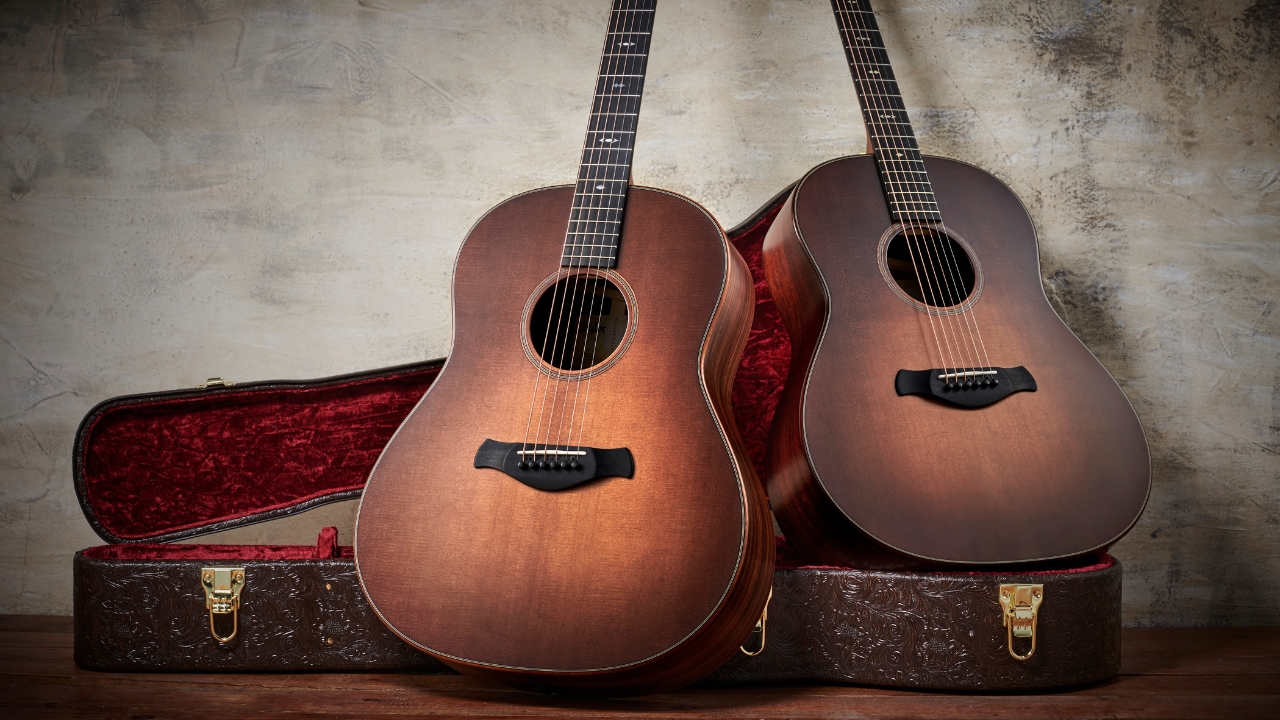
Every player has their own personal preferences regarding the tone and feel. However, regardless of taste, there are a few key areas that an acoustic guitar must meet before we'd feel comfortable recommending it in a guide like this.
Like with any instrument, we begin by looking at the overall quality of the build. We closely inspect every inch of the guitar, from the body and neck to the machine heads, bridge, and saddle, to ensure they feel robust, sturdy and up for taking you on your musical journey.
Next we'll check the consistency of the fretwork to confirm there aren't any sharp fret ends or uneven heights that may result in buzzing. This ties into the playability of the guitar. For us, the guitar should be comfortable to someone new to the instrument, and this means a reasonably forgiving neck and comfortable body when playing both sitting and standing up.
Lastly, we move our attention to the overall sound of the acoustic guitar. To test the tone of the instrument, we will try a variety of different playing techniques and styles to see how the guitar handles them, from strumming wide-open chords with a flat pick to soft fingerpicking and everything in between. We are carefully listening to the volume the guitar produces and the overall tonal balance of the sound.
Using our years of experience with instruments and music in general, we'll be able to characterise where in the frequency spectrum a particular instrument sits, and thus be able to judge whether it merits the price, or is fit for its intended purpose.
Find out more about how we make our recommendations and how we test each of the products in our buyer's guides.
Related buying guides
You can trust Guitar World
- Downsize to one of the best 3/4 acoustic guitars
- Enhance your acoustic with the best acoustic guitar amps
- Add another dimension to your playing: the best 12-string guitars
- Just starting out? Check out the best beginner classical guitars
- Unplug and play with the best acoustic bass guitars
- Get a bargain with the best acoustic guitars under $500
All the latest guitar news, interviews, lessons, reviews, deals and more, direct to your inbox!

Rob has 20 years of experience writing, reviewing, interviewing and editing for guitar magazines and websites, including Guitarist and Total Guitar.
Over the years he's interviewed artists including Metallica, Black Sabbath, Pearl Jam and Soundgarden, but he's lost count of all the guitar gear he's tested.
He's now Reviews Editor for GuitarWorld.com, Guitar World magazine and MusicRadar guitars, heading up our in-house reviews team to give you in-depth and honest tests of the latest guitar gear. He eats and dreams reviews.
- Matt McCrackenJunior Deals Writer
- Daryl RobertsonSenior Deals Writer
